Tag: home renovation technician training
3 Reasons to Pursue a Construction Apprentice Position After Home Renovation Training
August 10, 2023
Construction apprentices are essential workers who perform various tasks on different types of residential and commercial construction projects, such as houses, roads, bridges, and skyscrapers. Construction is an interesting and great career choice in a country like Canada which continues to develop rapidly and welcomes hundreds of thousands of immigrants annually.
A look at the numbers might provide some perspective. According to Statistics Canada, investment in building construction in February 2023 alone was a whopping $20.6 billion. This figure could have been even higher; a severe shortage of construction workers means the industry is not functioning at its full potential.
If you’ve been mulling over choosing a career as a construction apprentice after your Home Renovation training, our enthusiastic recommendation would be to go for it! If you’re still unconvinced, this article offers three reasons to pursue a construction apprentice position after Home Renovation training.
1. The Position Offers Ample Job Opportunities and Flexibility
The construction industry is one of Canada’s largest and fastest-growing sectors, and according to Construction Canada, it expects demand for more than 300,000 new workers by 2030. This is exciting news for construction apprentices, as it translates to many opportunities for year-round engagement. Unlike in many other careers, you will also have the flexibility to choose the type of projects that interest you, the location that suits you, and the schedule that works for you.

If you’re the type of person who loves challenges, you’ll find the perfect fit for your personality in construction after your Home Renovation Technician training. No two days on the job are the same, and there’s always something new to discover and new heights (maybe even literally) to explore. To make things even more interesting, you don’t need to be tied to any location, company, or even project if you don’t want to be.
2. Career Growth as a Construction Apprentice
Working as a construction apprentice can be a stepping stone to other positions in the construction industry, such as foreperson, supervisor, estimator, or project manager. Our Home Renovation Technician diploma program encourages students to be optimistic and strive for goals despite challenges and obstacles. They carry this mindset into the workplace, motivating them to strive for career growth.

3. A Rewarding Career After Home Renovation Training
It’s an unarguable fact; working as a construction apprentice can be challenging. But it can also be vastly satisfying and fulfilling. The job provides the perfect platform to use your skills and knowledge from Home Renovation training to create structures that improve people’s lives and communities.
In addition, you’ll get to work with a diverse team of professionals who share your passion and vision for crafting solid structures that meet the basic needs of a large group of people. Beyond this, there’s that satisfaction of seeing the results of your hard work every day.
Are you ready to earn your Home Renovation diploma?
Contact NATS to learn how to get started.
4 Red Flags To Look Out For in Basements After Home Inspection Training
June 28, 2023
Basements are an integral part of a home. They provide useful storage space, serve as a foundation for the entire structure, and house most of the home’s key functioning systems. Despite all of these, though, potential homebuyers tend to spend the least amount of time in basements and typically fail to notice issues with them.
As is often the case, this can be a mistake; a troubled basement is a fertile breeding ground for sickness-causing mould. It can also pose a fire hazard in the future, or, at the very least, cause homeowners to spend a lot on repairs. During your inspections, you’re responsible for making sure that your clients don’t fall into these types of traps. In this blog post, we will discuss four common red flags to look out for during basement inspections after your training.
1. Moisture and Water Intrusion Founded Through Home Inspection Training
One of the most critical issues to identify in basements is moisture and water intrusion. Excessive moisture can lead to mould growth, structural damage, and a host of other problems. Signs of moisture include water stains, dampness, musty odours, and efflorescence (white, powdery deposits on surfaces). During your inspection, pay close attention to the basement walls, floors, and ceiling for any visible signs of water intrusion. Additionally, inspect the perimeter for proper grading, functioning gutters, and adequate drainage systems.

2. Foundation Cracks and Structural Issues
Just as you’ve learned during home inspection training, basements are susceptible to foundation cracks and structural problems due to soil movement, settling, or poor construction practices. These issues can compromise the stability and safety of the entire home. During your inspection, carefully examine the basement walls, floors, and foundation for any visible cracks, bulges, or signs of shifting. Horizontal cracks, widening cracks, or stair-step cracks are particularly concerning and should be evaluated by a structural engineer to determine their severity.
3. Home Inspection Training Highlights Inadequate Ventilation and Poor Air Quality
Basements often lack proper ventilation, leading to poor air quality and potential health hazards. Insufficient airflow can result in a buildup of moisture, stale air, and the proliferation of harmful substances such as radon gas. During inspections after your home inspection training, check for proper ventilation systems, including vents and exhaust fans, to ensure adequate air circulation. Consider conducting a radon test as well, as it is a colourless, odourless gas that can be harmful if present in high concentrations.
4. Electrical and Plumbing Issues
In addition, it is crucial to inspect the electrical and plumbing systems housed in basements. Outdated or faulty electrical wiring, exposed wires, improper grounding, and overloaded circuits can pose significant safety risks.

Carefully examine the electrical components for any signs of wear or potential hazards. Similarly, inspect the plumbing system for leaks, damaged pipes, and indications of water damage, which can lead to costly repairs and structural issues. Don’t forget to ensure that sump pumps, if present, are functioning properly to prevent basement flooding, which can cause extensive damage to the property. To ensure the basement’s safety and functionality, it is imperative to thoroughly inspect these systems.
Are you eager to learn more about a home inspection program?
Contact NATS for more information now!
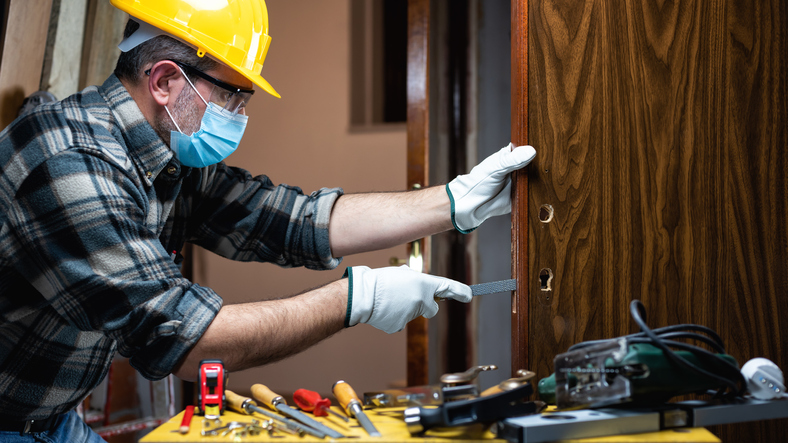
Measuring a room may seem like a straightforward task that requires little guidance, and some people actually prefer to overlook this part. However, when it comes to home remodelling, accurate measurements are crucial for ensuring a successful project. Taking accurate measurements before starting a home remodelling project can prevent a lot of extra stress and expenses further down the road.
Knowing how to measure a room correctly is an essential skill that sets the foundation for any renovation endeavour. In this blog post, we will explore three essential tips to help you take accurate measurements after home renovation training.
1. Home Renovation Training Sets the Groundwork
The foundation of accurate measurements lies in using reliable measuring tools. While it may be tempting to use the tools you already have at hand, investing in high-quality measuring tools will greatly enhance your accuracy. A few essential tools to consider include a tape measure, a laser measure, and a level.
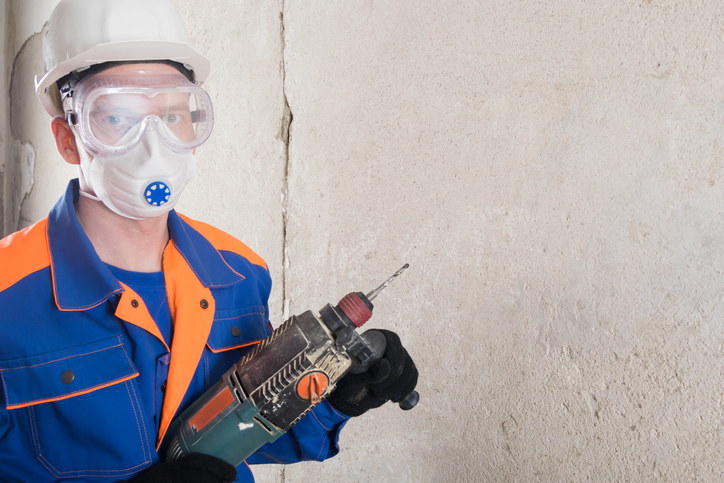
To ensure accurate measurements after your home renovation training, first, check that your tape measure has a minimum length of 25 feet. You should enlist a friend to help you hold the tape straight, as this improves accuracy. Take note of the location of electrical outlets while measuring, which is essential for planning lighting and other electrical needs. If you find it difficult to measure manually, consider using a laser measuring tool for precise and automated measurements. Lastly, remember to measure any windows to account for their dimensions in your remodelling plans.
2. Be Systematic and Thorough
To accurately measure a room during home remodelling, start by measuring the baseboard length from one corner to the next using either a tape measure or a laser measure. Record the measurements and repeat the process for the remaining walls. If the room is L-shaped, remember to measure the additional wall.
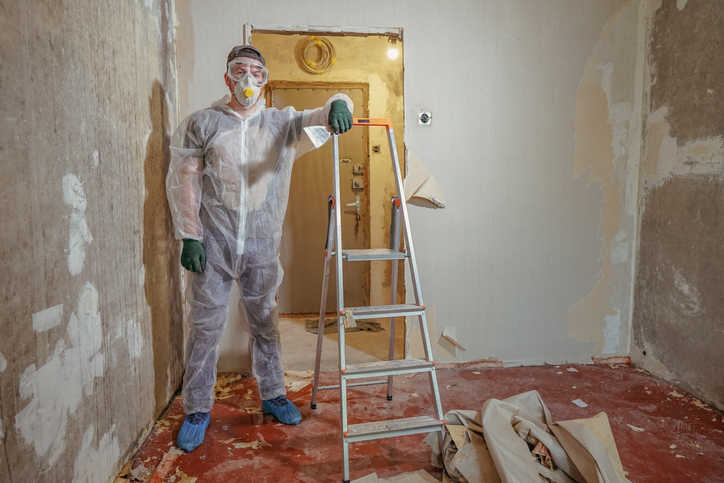
Take note of the measurements for doorways, including the swing direction of the door. Also, measure the distance from openings to hallways and open archways, using techniques and insights you picked up from the home renovation courses you took. Measure the height of the room, accounting for any key openings that affect the room’s layout.
Don’t forget to measure additional infrastructure features such as shelves, fireplaces, cabinets, and other built-in components within the room. These measurements should be included in your overall measuring process.
3. Home Renovation Training Ensures You Know How to Measure Correctly
To minimize errors and increase accuracy, always take multiple measurements of the same dimensions and cross-verify the results. Even the most precise measuring tools can be subject to human error, so this step is vital for ensuring consistency.
When measuring, take note of the smallest unit of measurement on your tool and record the measurements accordingly. For example, if your tape measure has markings in inches and centimetres, be consistent in your recordings and avoid mixing the units.
If possible, have someone double-check your measurements or use alternative methods to verify accuracy. For instance, if you measured a room’s length using a tape measure, cross-verify it by measuring the width as well. The measurements should match up, providing reassurance that your initial measurements were accurate.
Are you interested in home renovation technician training?
Contact NATS now for more information!
3 Paint Application Tips to Use After Home Renovation Technician Training
April 25, 2023
Painting is one of the final stages of every building or home renovation job. However, it’s also one of the most delicate tasks. Get it right, and you’ll have applied the perfect finish to your masterpiece and crafted the perfect ambience for the home. On the other hand, if you get it wrong, it can take the shine away from all your hard work up to that point.
If you’re considering becoming a Home Renovation Technician, you likely have an eye for design and the ability to bring a client’s vision to life. After completing your training, you may use paint application techniques to enhance the finished look of a project. In this blog post, we will discuss three paint application tips you can use after completing your home renovation technician training.
1. Prepare the Surface After Home Renovation Courses
Before beginning any paint application after your Home Renovation Technician training, it is crucial to prepare the surface properly. Preparing the surface means cleaning, sanding, and priming the area to ensure the paint adheres well and looks smooth. Cleaning the surface may involve removing any dirt, debris, or peeling paint that may be present. Sanding the surface helps to smooth out any bumps or roughness that may interfere with the application of the paint. Finally, priming the surface will help the paint stick and ensure the colour appears consistent.
It is important to note that different surfaces may require different preparation methods. For example, wood surfaces may require more sanding than metal surfaces, and concrete surfaces may require a special primer. Knowing the correct preparation methods for different surfaces can help you achieve a professional-looking finish.
2. Use the Right Tools and Techniques
Using the right tools and techniques can also make a significant difference in the outcome of your paint job, as you will learn in your Home Renovation courses. There are a variety of tools available for paint application, including brushes and rollers. Each tool has its own strengths and weaknesses, and it is important to choose the right tool for the job. For example, brushes are best for detail work and edging, while rollers are ideal for large, flat surfaces.
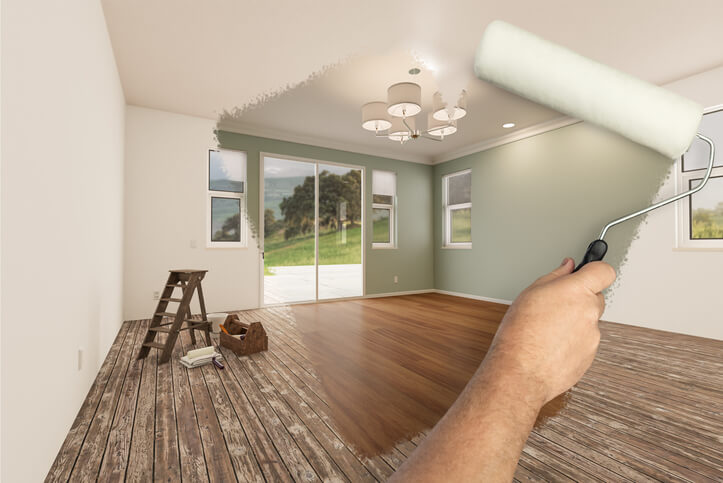
In addition to using the right tools, it is important to use the correct techniques. For example, when using a brush, you should use long, smooth strokes to avoid visible brush marks. When using a roller, you should roll in a “W” shape to ensure even coverage. Knowing the correct techniques for each tool can help you achieve a professional-looking finish.
3. Choose the Right Paint
The type of paint you choose can also drastically affect how your paint job ends up. There are a variety of paint types available, including latex, oil-based, and specialty paints. Each type of paint has its properties and is best suited for different surfaces and applications. Latex paint is best for interior walls, while oil-based paint is best for exterior surfaces. Specialty paints, such as chalk or metallic paint, are ideal for adding texture and interest to a project.
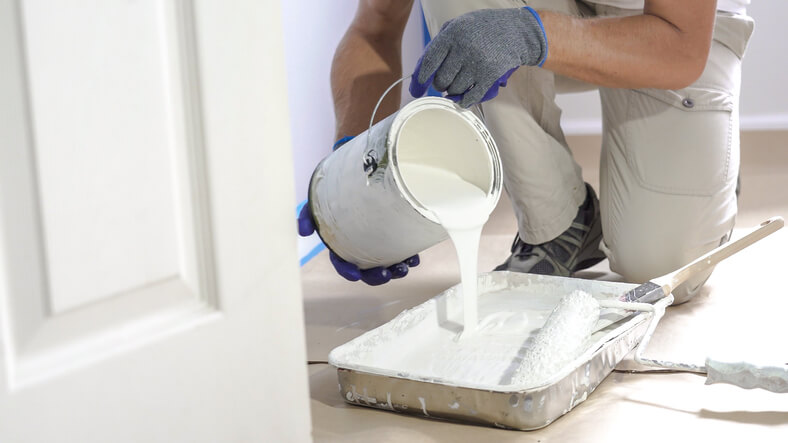
Choosing the right paint type is equally as important as choosing the right colour and finish. The colour should complement the rest of the room or project, while the finish should match the desired look and durability. Choosing the right paint can help you achieve a professional-looking finish that will last years.
Are you interested in earning a Home Renovation diploma?
Contact NATS to learn how to get started.
Infographic: Things you Need to Know About Pursuing a Career in Home Renovation
April 07, 2021
Home renovation is an exciting choice for study and for a professional path. When you pursue home renovation as a career, you allow yourself to keep learning every day and develop skills that help people, while allowing you to see tangible results from your efforts. Home renovation school equips you with the skills you need to succeed, such as the basics of plumbing, carpentry, and stair construction.
There are some things that end up being very important after home renovation technician training that may surprise you. For example, communication is much more important than many realize, and you may spend quite a bit of your time speaking with homeowners. You also will need to be aware of tasks like record-keeping and managing dust, in addition to the various tasks you are responsible for.
If you’re curious about home renovation as a career and wondering what you need to know before chasing your dream, read on to learn more!
Things you Need to Know About Pursuing a Career in Home Renovation
It Involves a lot of Different Tasks
- Basic plumbing
- Carpentry
- Interior and exterior finishes
- Basic cabinetmaking
- Stair construction and installation
- Roof construction
These are all skills taught through hands-on training in a home renovation program. You may choose to specialize in your career!
Did you know? Kitchen renovations are a place many homeowners start to add value to their home.
You’ll Keep Learning
- No two homes are exactly alike
- You may work with others who have more experience
- You can solve problems and learn from challenges
Fun Fact: Basement suites are becoming more of a common renovation, as rising interest rates are creating a need for supplemental income.
Keeping Records Is Important
- Contracts are written records of agreements
- Records protect both you and the homeowner
- Keep a record of payment
- Keep copies of the emails or messages you exchange with homeowners
- Confirm information in writing using follow-up messages
You Will Make Mistakes Sometimes
- Things can go wrong on projects
- Owning up to the mistake right away is the professional response
- Communicate with the homeowner clearly
- Find a way to correct your work
- This approach makes you more trustworthy overall
Homeowners Are Curious
- Many people enjoy receiving tips and information on their homes
- Explaining your choices helps homeowners trust you
- Help people take better care of their homes
You’ll Find Dust Becomes an Issue
- The biggest cause of mess in home renovation is dust
- Dust spreads easily and gets in vents in homes
- You will benefit from techniques like covering vents
How Has COVID Impacted Home Renovation Trends? Here’s a Look for Students in Home Renovation Training
October 27, 2020 The global pandemic has shifted many of our behaviours, including the amount of time people are spending at home. Due to social distancing and isolation rules, people are forced to stay within the confines of their houses more than ever before, leading many to examine their surroundings with a more scrutinizing eye.
The global pandemic has shifted many of our behaviours, including the amount of time people are spending at home. Due to social distancing and isolation rules, people are forced to stay within the confines of their houses more than ever before, leading many to examine their surroundings with a more scrutinizing eye.
Whether it’s due to boredom, lots of unused vacation budget to burn, or from a genuine dissatisfaction with their surroundings, people seem to be engaging in a lot more home renos since the pandemic hit. To learn more about what kinds of renos they’re opting for, let’s check it out!
The Shift from Open Concept to Closed-off Living Spaces
Ever since the pandemic began boxing families in together to an unnatural degree, many people have been expressing an interest in moving into new construct homes. According to a recent survey, requests for these new builds are overwhelmingly for designs that have more rooms with closed doors—a move away from the open concept home with a combined kitchen, dining area, and living room. The design trend is clearly connected to the need to spread family members out into more areas of the house so that everyone can work or study from home in privacy and peace.
The Home Office Reno
As a result of the work from home shift, many design and reno pros are receiving requests to help homeowners create more private spaces for work and study. Basements, guestrooms, pool sheds, and other spaces are being converted into home offices, learning rooms, or play areas for those with smaller children. Existing rooms are also being converted to accommodate the new normal, with corners of bedrooms and dining rooms as examples of home areas being fashioned into small, functional workspaces.

The Need to Create “Staycation” Spaces
With no clear end to the pandemic in sight, one trend noted by experts is a transformation of the home into the ultimate staycation spot. People who decide to spend on these luxury changes are often sitting on cash they’d saved up for a vacation, choosing to spend it on home improvements instead. Unlike the functional home office reno, the objective with the “staycation” home reno is to make some part of the home feel more luxurious to provide the feeling of relaxation one might expect on a vacation.

Pros seasoned in home renovation technician training can put their combined electrical, plumbing, and carpentry chops to work to help these homeowners realize their visions. One of the most common pandemic staycation splurges observed by reno pros is the full backyard overhaul to include more luxe outdoor seating and dining spaces, with lots of new decks, patios, pools, and hot tubs getting installed. Home cinema and game room requests are other examples of pandemic bonus-room spends.
The Long-Haul Reno Requested of Pros with Home Renovation Training Backgrounds
Some designers have noticed a trend in homeowners who’ve already made major purchases—such as a pool installation or complete patio re-design—placing advanced requests for ongoing improvements to their new space. As the seasons change, many people want to keep enjoying their outdoor spots by adding a few extra creature comforts. As a result, those with home renovation training backgrounds are using their know-how to meet lots of requests for outdoor fire pits and cozy patio fireplaces as homeowners look to extend the use of their outdoor spaces.
Homeowners are also putting advance requests in for ponds, entertainment rooms, outdoor gaming areas, and other projects they can look forward to—a clear move to make the home a more entertaining and enjoyable area for the family to spend time in, with the pandemic remaining unpredictable in how it might impact our habits in the days ahead.
Are you interested in learning more about the skilled techniques for accomplishing home projects through home renovation school?
Contact North American Trade Schools today for more information on its exciting diploma program!
3 Things Everyone in Home Renovation College Should Know About Home Remodeling for People with Disabilities
July 30, 2020
When someone has a disability and wants to live comfortably in their own home, it must be repurposed to accommodate their needs. Remodeling a home with accessibility in mind can be tricky, but there are ways it can be done. When prioritizing the needs of those with disabilities, you’ll need the right tools and an eye for design. Whether physical or cognitive, you can get creative with how you remodel homes and make a positive difference in their quality of life.
While different people will have different needs for improving their home’s accessibility, these are some general tips that can help guide you along with these types of projects. Here are three things you should know about home remodeling for people with disabilities.
Make Sure the House Is as Easy as Possible to Navigate
For any remodeling project with disability in mind, the top priority must be to ensure those living in the home can have optimal mobility within it. This means you must make it so that they can navigate all areas of the home with ease. For example, you can install a stair lift on flights of stairs, so that those with mobility difficulties can sit on the lift as it moves up and down. You’ll also want to make sure the home’s flooring is smooth and wheelchair-friendly, and that the kitchen is also re-designed for accessibility. Furthermore, make sure all doors in the home are wide enough for them to easily enter and exit (though this may be a time-intensive part of the project), and that doorknobs are low enough for those in a wheelchair to open them.

When You Become a Home Renovation Technician, Focus on the Outside Too
If you’re remodeling the home of someone with a disability after your home renovation technician training, keep in mind that the accessibility of both the interior and exterior of the home should be accounted for. Therefore, think about how outdoor areas such as the backyard can be remodeled, such as widening doorways. You can work on paths so they can be more friendly for those with reduced mobility, or you can try to make the ground more level so that those in a wheelchair can go outside without risk of falling. One of the easiest ways to make the exterior more accessible is to add ramps in the front and the back, so those living in the home can easily move in and out.

The Bathroom Is Also a High-Priority Area in the House, Especially for Safety
Perhaps one of the most crucial areas of the home to remodel is the bathroom, as not doing so can create safety hazards for the person living in it. After you become a home renovation technician, the most important parts of a bathroom to repurpose are: the doorways (to ensure they are wide enough for easy access), sinks and countertops (so that they’re low enough to be used by those in a wheelchair), bathtub (a roll-in or walk-in bath is likely your best bet) and the shower (installing a walk-in shower is ideal for safety and mobility reasons). Another feature you can add to the bathroom is grab bars, which improve accessibility for those living in the home, since they can grab onto them whenever necessary—for example, on the sides of the toilet.
Do you want to take courses at a home renovation college?
Contact North American Trade Schools for more information!
What Students in Home Renovation School Should Know About Spray Booth Painting
December 31, 2019
Spray booths are widely used in the automotive industry for painting cars. They’re also very useful in home renovation, when working on paint jobs that need to have a smooth, flawless finish. These booths aren’t just for classic spray jobs—you can also use a paint booth to apply lacquer or glaze, or for shading and faux finishing.
When you are working in clients’ homes, you want to work as neatly and cleanly as possible. Dust, debris and spills are undesirable when people have you in their houses, as you want to make your presence as easy as possible for them to live around. This cleanliness also applies to surfaces you are painting. Read on for more about why you should know about these handy booths if you’re going to work in home renovation!
Isolating Paint Jobs After Home Renovation School
When you are working on a paint job such as a door or trim, you don’t want any of the dust and dirt from working on other parts of the home to stick to the paint. This can create an uneven, gritty surface and take away from the smooth, professional finish you want. A booth allows you to separate the paint job from the surrounding environment, so that particles can’t blow onto the project and settle.
If you’re in home renovation school you might be looking to pursue a career in the field, or you may be most excited about doing your own home projects with a professional level of skill. If you’re working on your own home, you surely want to do the best job you can when reviving the space. Keeping clean can make the difference between a very DIY look and the stuff of pros.
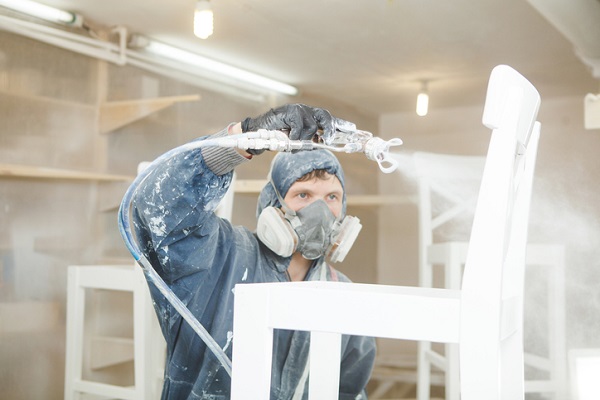
Students in Home Renovation School Should Know How Airflow Works
The flow of air in a spray paint booth affects the quality of the paint jobs done inside of it. Air runs into a paint booth through a filter, so that the space is not contaminated by debris or dust from other work on the site. It then flows out through an exhaust area and rids the space of flammable fumes. This allows for the job to continue safely without any issues with regards to safety.
The ventilation in a booth prevents spray from escaping into the exterior of the booth. It also makes jobs more efficient—overspray, or suspended particles settling and painting areas that aren’t meant to be painted, is a concern during jobs. Well-ventilated paint booths will carry the overspray away from the cupboard door or tiles you are painting and not allow it to land on top of the project.
Why Lighting Matters in Spray Paint Booths
If you’re in home renovation technician school, you probably already know the importance of lighting projects well so that you can see your work. When you are working in a booth, you will require lighting that doesn’t cast shadows over the job, so that you can judge evenness and quality of the surface. You may also need to match colours while you paint, in which case light should adequately allow you to do this.
For painting, you need to be able to clearly see the wet edge on the item, so lighting has to show the surface of the project where the coating makes contact with it.
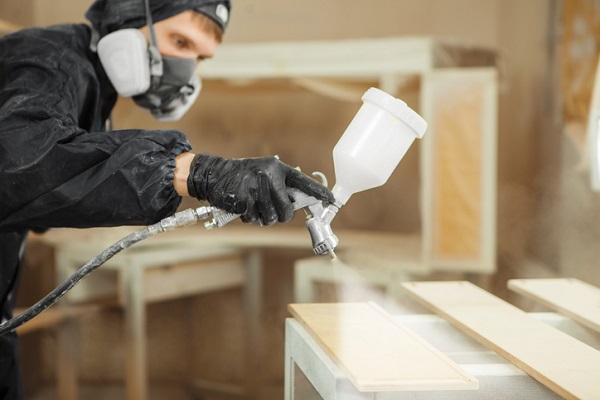
Are you looking for home renovation technician training?
Contact North American Trade Schools for more information.
3 Reasons Carpentry Assistant is a Great Career After Home Renovation Technician School
October 15, 2019
If you’re hard-working, love challenges and love working with your hands to get projects done, then becoming a carpentry assistant could be the right career choice for you. The field of home renovation covers various different crafts and trades, and carpentry is one of the most interesting among them.
In fact, working as a carpentry assistant has many advantages depending on what you are looking for in a job. Here are three reasons why becoming a carpentry assistant is a career path worth pursuing after your home renovation technician studies.
1. Carpentry Assistants Get to Tackle a Variety of Tasks
As a carpentry assistant, you might find yourself helping more experienced carpenters in performing a variety of tasks, such as safely using various tools, reading blueprints, and taking proper measurements. In certain carpentry assistant roles, you may also be expected to take care of duties such as ensuring that facilities are kept clean and machines are properly serviced, gathering and storing construction materials in shops or at construction sites, and helping to ensure that the worksite is kept safe for everyone. You may also be tasked with various drilling, cutting, planing, and other types of jobs with wood, lumber and paneling. This type of job can help give you plenty of experience in the carpentry trade after you’ve studied how to become a home renovation technician.

2. You Can Work on a Schedule That Isn’t the Typical 9 to 5 Day
Schedules can vary significantly in carpentry. Sometimes you can expect to find yourself starting the day around dawn, and working into the evenings to make sure projects can be completed in a timely fashion. That can mean more money in your pocket at the end of the day. At some places, you may work a short work week of just 4 days, while the workdays themselves will be longer. In other words, you can get a long weekend every weekend in those situations! Additionally, because of extenuating circumstances like project delays or weather, the length of the work week and work days can change with little notice. While that sort of schedule doesn’t work for everyone, if you’re someone who wants to avoid the monotony of the typical 9 to 5 workday, then working as a carpentry assistant could be a great choice.
3. Your Home Renovation Technician Training Could Lead You to Various Work Environments
You’ll learn a lot about carpentry during home renovation technician training and you will afterwards be able to take those skills and apply them in different work environments. On some projects, those working in carpentry could find themselves working on construction or remodeling projects with residential homes or commercial offices. Carpentry assistants are also required on big projects, such as highways, bridges, and ships. You may be surprises to learn that carpentry assistants are also found on film and television shoots, as those projects need carpenters and assistants on hand to help build sets and take care of various maintenance duties. Whatever the project may be that you work on, it’s clear that a career in carpentry can take you down many interesting paths.

Want to attend home renovation technician school?
Contact North American Trade Schools to learn more!
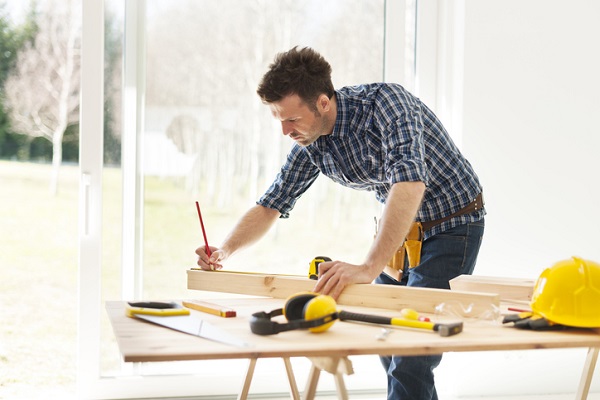
Learning a trade like home renovation provides you with a marketable specialty. You’ll have skills that are in demand by the many people who require renovation work on their homes every year. In addition to providing a nice income, home renovation skills can benefit you in other ways.
If you’re considering training to work in the field of home renovation, you may be surprised by the number of benefits you’ll gain from it. Let’s look at just some of those benefits below.
Home Renovation Is a Skill That Will Never Be Out of Fashion
No matter how technologically advanced society becomes, there will still be a need for home renovation skills. Even if we eventually relocate to Mars, we’re going to build shelters and we’ll need home renovators to help! So long as people live in homes, they are going to need people with home renovation skills.
That’s why the demand for home renovators will continue to be strong. But there is more to a career as a home renovator than a stable income (although that’s certainly nice to have). The skills you’ll learn during home renovation technician training can serve you well both in your personal and your professional life.
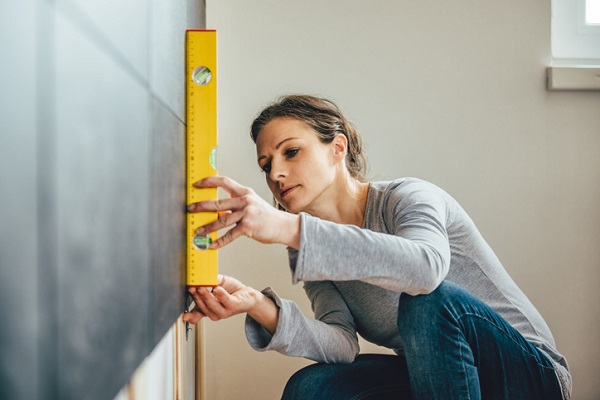
Whether it’s helping your retired neighbors fix the porch or educating your teenaged son or daughter about how to read blueprints, the skills you will acquire during a career in home renovation will always benefit you and those around you. How many people can say that about their job?
Making Money Is One Thing, But Have You Thought of the Money You’ll Save?
There’s a financial benefit to being a home renovator you may not have considered: no longer having to hire someone else to renovate your own home. The average Canadian homeowner spends over $10,000 on home renovations. Now, imagine being your very own general contractor and pocketing that money. With the knowledge of a modern handyperson, you can achieve independence at home and in your career. Not only will your skills be in demand by other homeowners, but those skills will also help you save money by being able to do work on your own property.
Drop the Gym Membership—A Career in Home Renovation Is a Cheaper Way to Stay in Shape
The benefits of engaging in regular physical activity are pretty obvious. But people who spend their days in a cubicle sitting in front of a computer don’t get too many opportunities to exercise. Unless, of course, they spend hundreds of dollars a year on a gym membership! As a home renovator, however, you’re constantly staying active on the job. You might be moving from one room to the next, one residence to the next, or one job to the next. At any rate, you’ll be moving and working with your hands, which is exactly what many home renovators love about their jobs.

Are you interested in home renovation college?
Contact the North American Trade Schools to find out if a career in home renovation is right for you.






